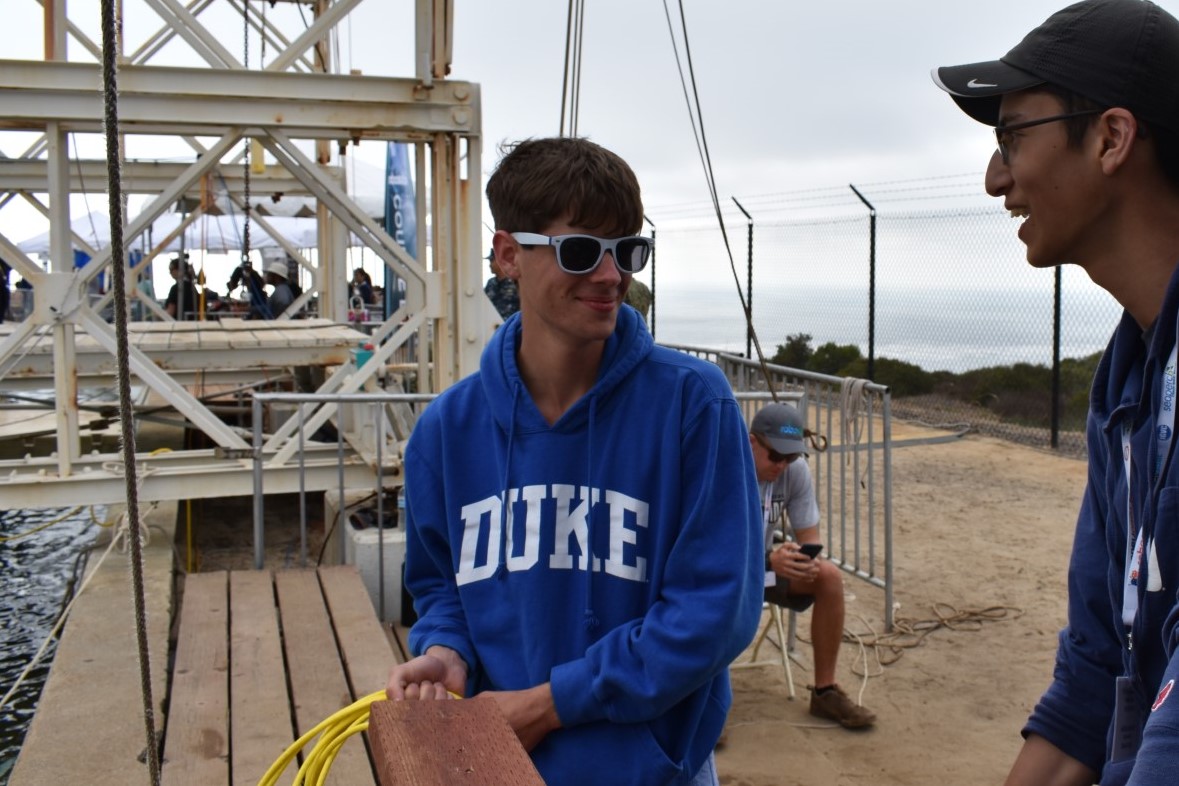As a freshman, I knew I wanted to join a project team where I could learn engineering skills, take on a complicated design challenge, and build something real. That’s exactly what I’ve been doing in the Duke Robotics Club (DRC). The club’s primary focus is designing, building, and programming an autonomous underwater vehicle (AUV) for the annual international RoboSub competition.
I spent my first year designing, prototyping, and fabricating an actuator for the club’s autonomous underwater vehicle, familiarizing myself with SolidWorks, 3D printing, and manual machining. The following year, I was appointed leader of the club’s mechanical division.
The jump from being in charge of one actuator to being in charge of coordinating the structural design, construction, and waterproofing of the entire robot happened quickly. A major change in our competition’s rules also meant the club needed to build a new robot – something that hadn’t happened in three years. I spent the end of my first year trying to pick up as much information about thermoplastics, epoxies, and O-rings as possible from the team’s elders.
The next year, we jumped right into the design process. Over the course of the year, we moved from making big-picture design choices and purchasing decisions to making detail drawings and spending our few free hours with a CNC mill. Along the way, the challenges were many. I struggled with the balance between completing critical tasks and engaging prospective members. Every new fabrication process we tried went wrong the first time. Long lead times and close deadlines added stress to an already-overloaded second semester.
Around the time that we were running into our most significant fabrication issues, a guest speaker in my technology commercialization class emphasized the the following: Results = Results. Results ≠ Lack of Results + Excuses. As the one in charge of making things happen, I worked with people who specialize in producing results and those who specialize in excuses. This was one of the greatest difficulties of my leadership role. Moving forward, I’m planning to establish a system that helps clarify expectations and makes sure everyone has the resources to deliver the results the club needs.
Needless to say, I put in a lot of hours – in the ballpark of 300 over the course of my sophomore year. Dozens of those went into learning to use software for analysis and fabrication. I now know more about working the CNC milling machine in Duke’s makerspace than most of the people that work there. I’ve used several kilograms of plastic in 3D printing various prototypes and models, and I’ve watched my teammates print kilograms more while working on tasks I directed their way. Perhaps most importantly, however, my team and I built a new robot. All our hours paid off at the first pool test, when we had the thrill of driving the remarkably speedy submersible through our gym’s swimming and diving pools.
In the summer of 2019, following my first year as mechanical team lead, DRC took 11 members to the international RoboSub competition in San Diego. A frenzied week of code writing, pool tests, and quick repairs got our young team to the semifinals. Although we didn’t come away with any prize money, we set ourselves up to have an even more successful year in 2020.
There are big things in the future of the robotics club. The team is young, and members across all three divisions have spent the year making major changes. In the upcoming years, we’ll have the experience to keep improving and are fortunate to have the resources to keep building newer and better iterations. I also look forward to applying the skills I’ve gained to novel design challenges throughout my Duke career and beyond.
Trevor is a junior majoring in Mechanical Engineering with a certificate in Innovation and Entrepreneurship.

